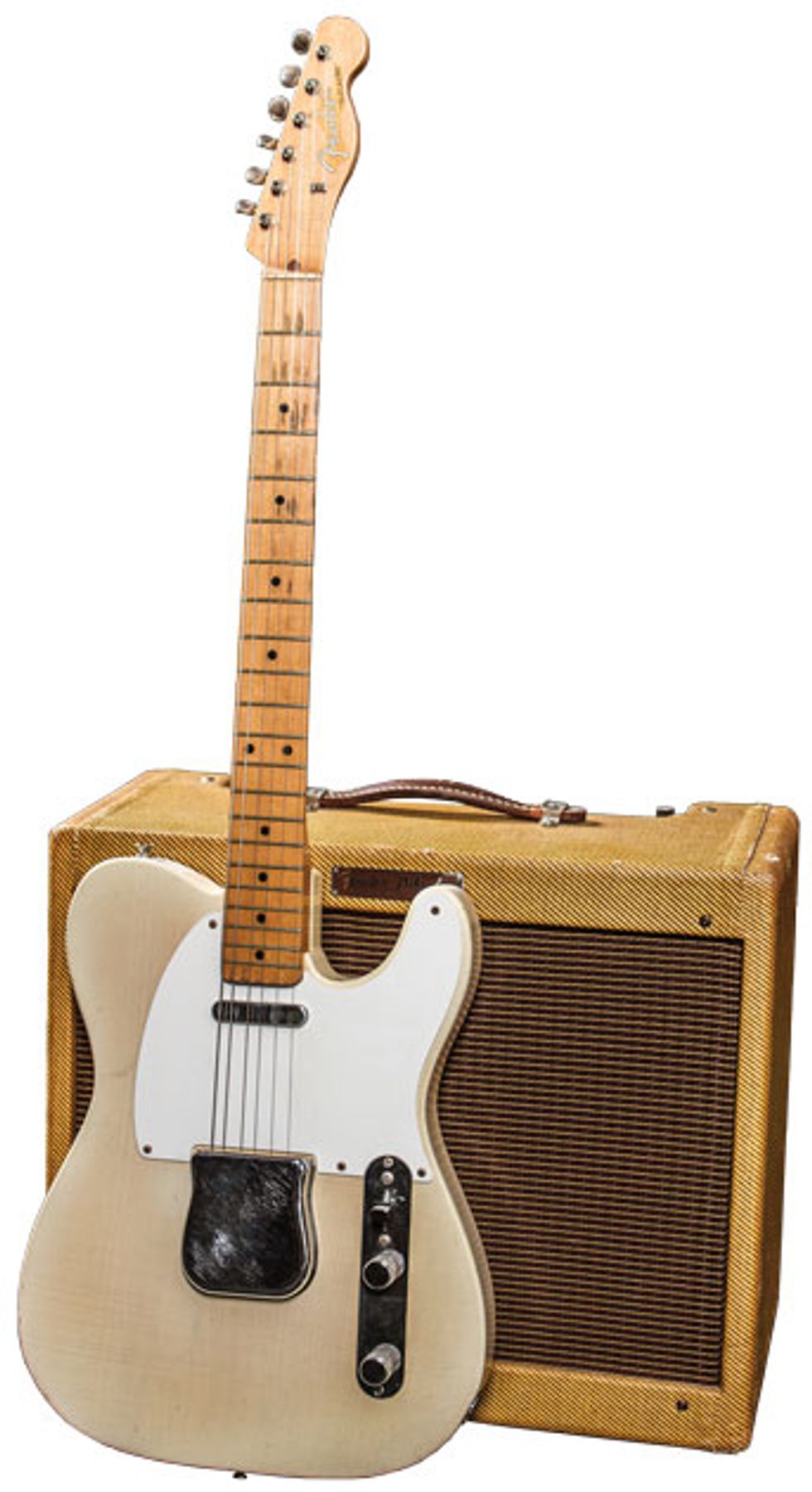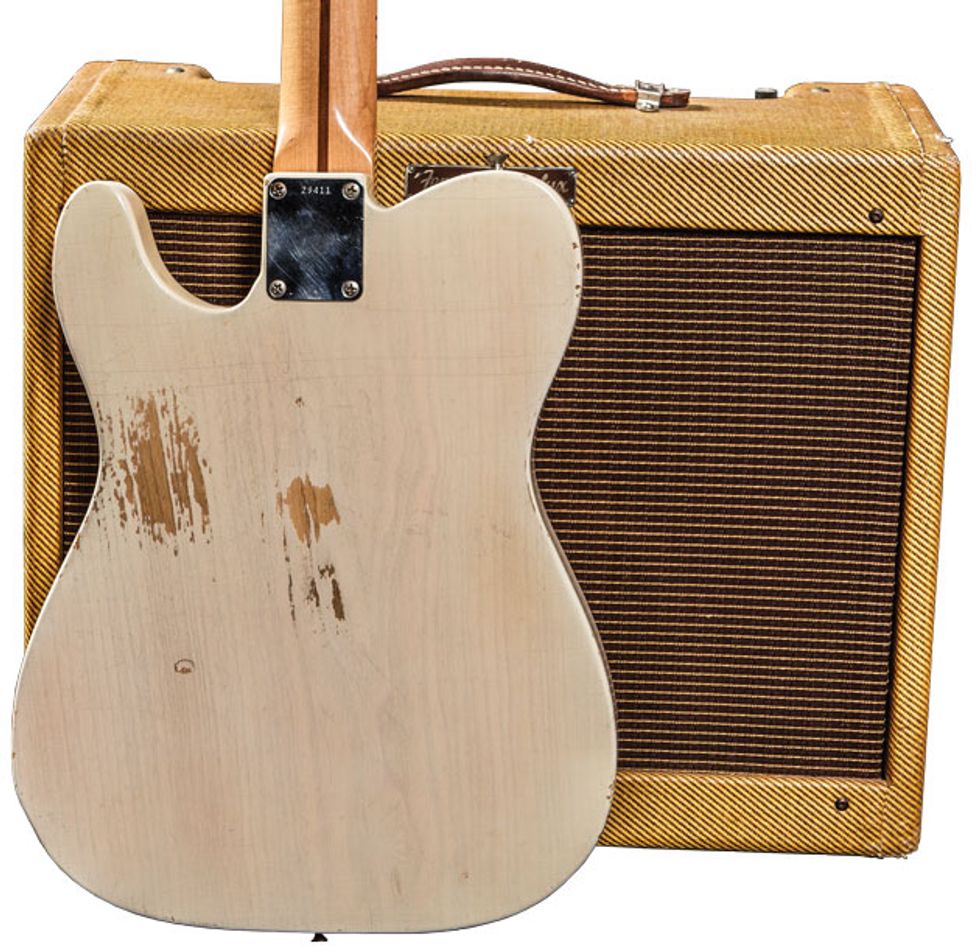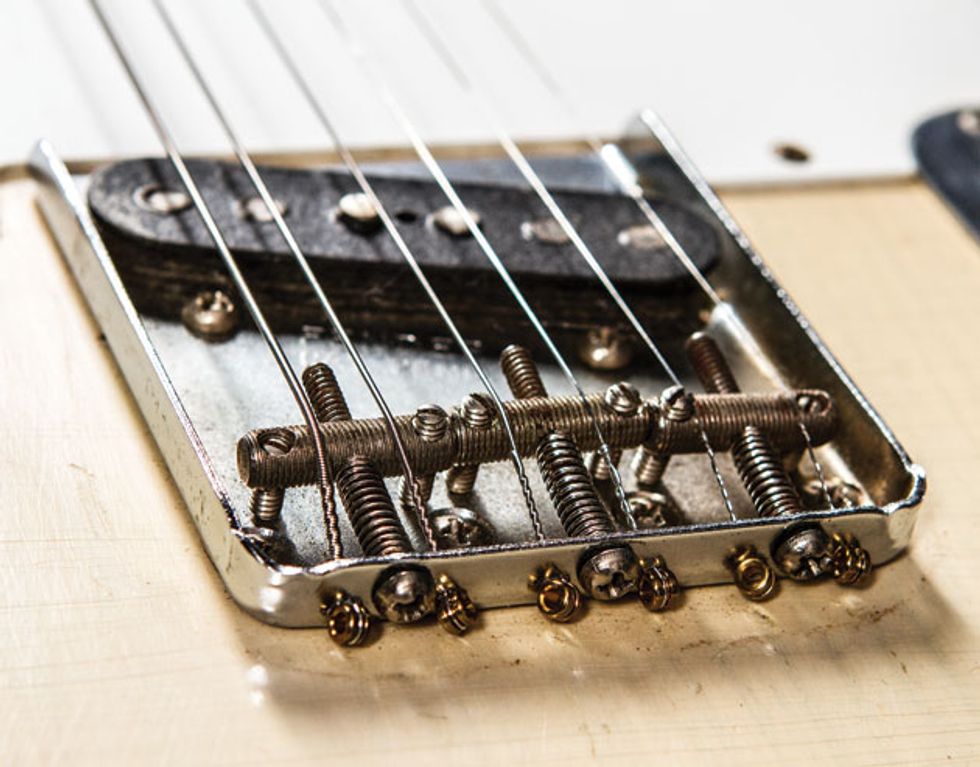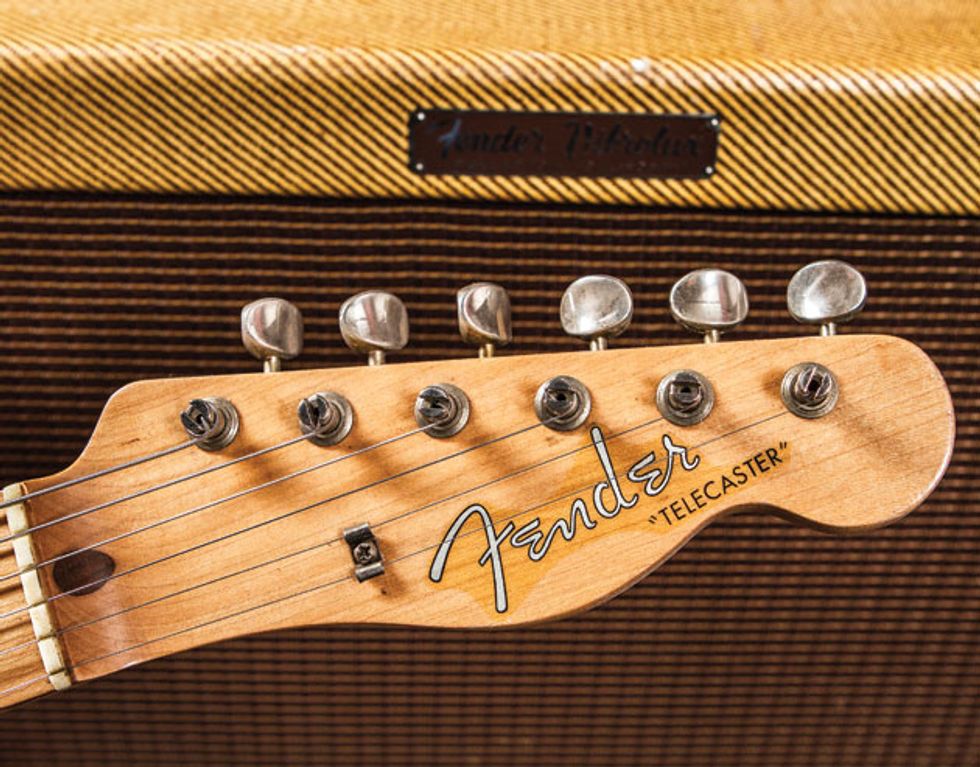Fender’s first major solidbody electric Spanish guitar, the Telecaster (originally named the Broadcaster), has transformed over time—reflecting both fashionable trends and the changes of other models in Fender’s lineup. One of the most unpopular and short-lived alterations took place in 1958, following the complete redesign of the Precision bass the previous year. This involved dispensing with the usual string-though-body construction, and having the strings anchor at the back of the bridge plate instead.
Photo 2 — The belt-wear marks on the back of this Telecaster’s ash body prove it was a player’s instrument, rather than a collector’s piece. Note the serial number on the neck bolt cover: 29411.
While this arrangement didn’t upset bass players, the Tele troupe found it not to their liking. The top-loading bridge was installed on Teles beginning in mid-1958, but by mid-1959 string-through construction was reinstated. Fender hadn’t anticipated changing back, so a large supply of pre-made top-loading bridges was left in inventory. Fender did not waste usable parts, so the bridges were redone to include holes at the bottom to allow stringing through the body. These bridges with two sets of holes were not depleted until the end of 1962.
The 1958 Telecaster pictured has the features most often associated with a top-loading Tele. These include a one-piece maple neck, a white 1-ply pickguard (black until late 1954, 3-ply after 1963), an ash body finished in translucent blonde, and a “spaghetti” headstock logo positioned above the string tree, lining up with the A tuner. (Before 1957, the decal was located below the string tree, near the G tuner.) The 1958 list price was $199.50. The current value for one in excellent all-original condition is $17,500.
Photo 3 — Although Tele enthusiasts of the ’50s were unhappy about the top-loading bridge, some players, including Jim Campilongo, believe top-loading models are more responsive.
The amp behind the Tele is a 1960 Fender Vibrolux. Introduced in 1956, the Vibrolux shared cabinet dimensions with the Deluxe, but had a schematic nearly the same as the Harvard. Both the Harvard and Vibrolux were powered by two 6V6 tubes pushing 10 watts through a 10” speaker. The Vibrolux had built in tremolo with speed and depth controls. The original price was $139.50. The current value for the amp is $3,500.
Photo 4 — Teles from ’58 sport a “spaghetti” headstock logo positioned above the string tree, lining up with the “A” tuner. Before 1957, the decal was located below the string tree, nearer the “G” tuner.










![Rig Rundown: Russian Circles’ Mike Sullivan [2025]](https://www.premierguitar.com/media-library/youtube.jpg?id=62303631&width=1245&height=700&quality=70&coordinates=0%2C0%2C0%2C0)


























